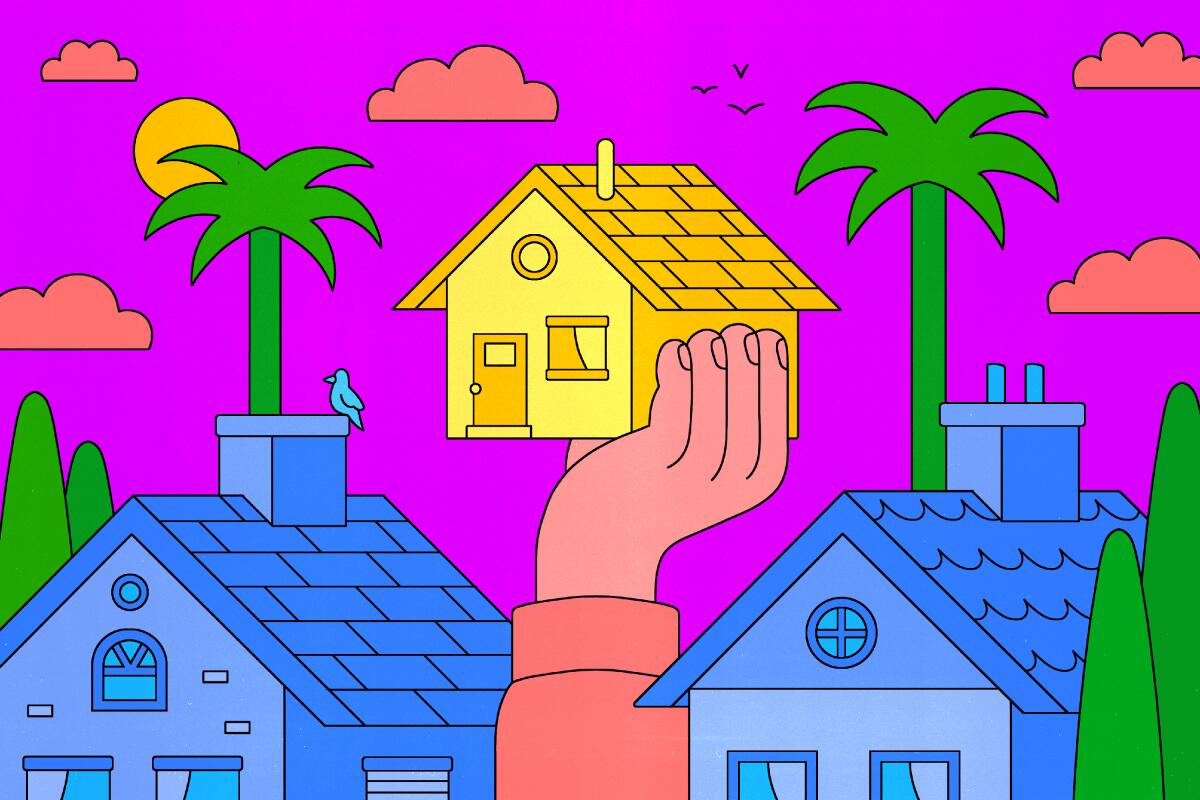Introducing the You Do ADU newsletter

- Share via
Maybe you feel like you’ve outgrown your home but can’t afford to buy a larger one. Maybe you need an extra bed and bathroom for your aging parents or a daughter just out of college. Or maybe you just need some extra income.
These are a few of the reasons why Southern Californians are racing to build accessory dwelling units — small, fully equipped homes on the same lot as a larger house (usually, the house they live in). In 2021, ADUs accounted for 15% of the housing units approved in California — a stunningly high percentage that reflects how expensive it is to build full-scale homes in this state. And Los Angeles has led the way, building far more ADUs than any other city.
Sign up for You Do ADU
Our six-week newsletter will help you make the right decision for you and your property.
You may occasionally receive promotional content from the Los Angeles Times.
But building an ADU isn’t a quick backyard project like putting up a swing set or a tool shed. Experts say it presents many of the same issues and complexities as building a full-sized home. And while an ADU costs significantly less than a new home, it’s not cheap — these jobs often cost $150,000 or more.
So before you start spending those dollars, you need to ask yourself a few questions to make sure you’re doing this for the right reasons. That’s what the You Do ADU newsletter is here to help you with. Because what may be the right reasons for someone else won’t necessarily be the right reasons for you. Depending on your goal, something other than an ADU might be a better solution.
“My main piece of advice is, at the very outset, understand why you’re building an ADU, understand your budget … and then try to figure out how to square the circle,” said Anthony P. Dedousis of Revival Homes, a startup that guides homeowners through ADU projects.
This six-week newsletter course isn’t meant to argue for or against ADUs. Instead, it tries to help you make the right decision for you and your property. That, in fact, is the focus of the first installment.
In the weeks after that, we’ll explore how much it will cost to build one of these units and how to pay for it; how to come up with a design; how to hire the professional help you will almost certainly need; and how to anticipate and avoid the problems that often crop up. The final piece, by my colleague Lisa Boone, will offer insights gleaned from other Southern Californians who built ADUs. What turned out well? What would they have done differently?
Your host

I’m Jon Healey from The Times’ Utility Journalism Team, the group that helps you sort through the issues you’ll face living in Southern California. Like building an ADU! Before you ask, no, I have not built an ADU. I converted my garage into ... a better garage.
But last year I wrote an extensively reported piece about how to build an ADU in Southern California, and it was clear from the reader response that we needed to dive deeper into the subject. There’s an enormous amount of interest, but at the same time a lot of uncertainty about how to pull off one of these projects.
Joining me on the project is Lisa Boone, a feature writer who regularly pens stories about ADUs and home design. Having interviewed a number of homeowners about their experiences building ADUs, she will share their insights in the last installment of this series.
Roughly half a million lots in Los Angeles alone could have “backyard homes,” according to Elizabeth Timme, an L.A.-based designer and proponent of ADUs. If you’re a Californian thinking about adding one, You Do ADU is the place to start.
Sign up for You Do ADU
Our six-week newsletter will help you make the right decision for you and your property.
You may occasionally receive promotional content from the Los Angeles Times.
About this newsletter
Sign up for You Do ADU
Our six-week newsletter will help you make the right decision for you and your property.
You may occasionally receive promotional content from the Los Angeles Times.




